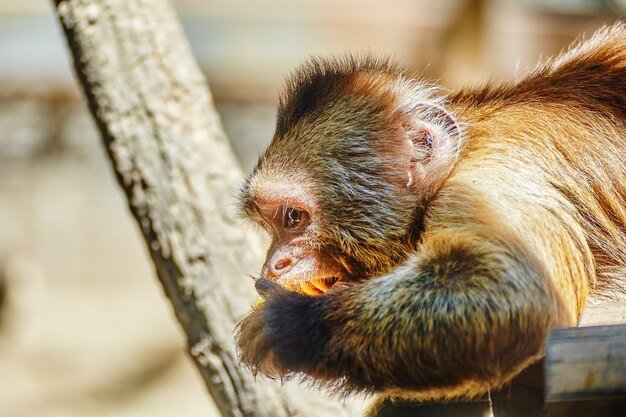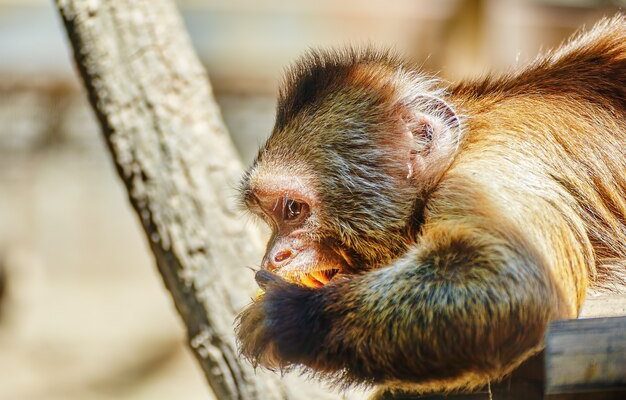
Capuchin monkeys are small, intelligent primates known for their expressive faces and dexterous hands. They live in various habitats, from rainforests to dry savannas. Their ability to adapt to different, often harsh environments is nothing short of fascinating. So, how do they manage to survive in conditions that might seem inhospitable? Let’s dive into the clever strategies and social behavior that help these charming little creatures flourish.
Adaptations for HarshWeather
Capuchin monkeys deal with a wide range of weather conditions. In tropical regions, it can get hot and humid, while in drier areas, they face a lack of water. How do they cope? One of the key adaptations is their thick fur, which provides insulation against the cold and protection from the sun. This robust coat helps them regulate their body temperature effectively.
In addition to their fur, Capuchins also seek shelter during extreme weather. They often build nests in tree branches to shield themselves from rain and wind. These nests may be made of leaves and twigs, creating a cozy spot high above the ground. By staying off the ground, they avoid dampness and potential predators, too. Honestly, it’s like they’ve created their little fortresses in the treetops!
Resourcefulness in Finding Food
Capuchin monkeys are known for their cleverness, especially when it comes to finding food. They have a varied diet, which includes fruits, nuts, seeds, small insects, and even small animals. When food is difficult to come by, they show incredible ingenuity. For example, they can crack open hard nuts using rocks or tools they’ve found in their environment.
Imagine you’re rummaging through your kitchen for a snack. Some Capuchins use the same problem-solving skills to discover what’s available. They might forage in groups, sharing information about food sources. This not only helps them find meals but also strengthens bonds within their social groups. You might be wondering how they know what to eat. Capuchins learn from each other, watching older monkeys and mimicking their behaviors. It’s a bit like learning your favorite recipes from family!
Social Structures for Survival
The social life of Capuchin monkeys is another crucial element in their survival. They live in family groups that provide support, protection, and cooperation. These groups can range from a few individuals to over twenty members. This social structure is vital, especially in harsh environments where threats like predators are more prevalent.
When faced with danger, Capuchins communicate loudly, using alarm calls to alert their group. This quick response can save lives by helping everyone escape potential threats. Plus, within these groups, monkeys take turns watching out for each other while some forage for food. It’s teamwork at its best. You can think of it like a community where everyone has each other’s back.
Handling Predators
Living in the wild means encountering predators, and Capuchin monkeys have developed several strategies to avoid becoming lunch. They are agile climbers, which allows them to escape quickly into the trees. They have a keen sense of observation, always on the lookout for anything suspicious.
For instance, if a hawk or snake is nearby, the monkeys will freeze and stay still until the danger has passed. They also use their social structure to enhance safety. By living in groups, there are always more eyes watching, making it harder for predators to catch them off guard. Honestly, having a group of friends to watch your back definitely has its perks!
Water Conservation Techniques
In drier environments, finding water can be a significant challenge. Capuchins have adapted to conserve water effectively. They obtain moisture from the foods they eat, particularly fruits, which contain a lot of water. But when food is scarce, they may also travel farther to find water sources like rivers or ponds.
In addition, these monkeys are adept at exploiting their surroundings. They’ll often dig up roots or chew on bark when necessary, which can be a water source, especially during the dry season. Their resourcefulness highlights how Capuchins can turn their environment into a support system, even when it seems uninviting. It’s like being a savvy survival expert in your own backyard!
Intelligence and Problem Solving
Let’s talk about the brains behind the brawn—Capuchin monkeys are incredibly intelligent. Their problem-solving skills are on display every time they encounter a new challenge. Whether it’s figuring out how to access hard-to-reach food or using a stick to extract insects from tree bark, they’re constantly demonstrating their cognitive abilities.
Research has shown that Capuchins can plan for the future, which is a skill many animals lack. For example, they might save tools for later use or remember the locations of food sources. This ability to strategize plays a vital role in their survival, especially when living in harsher climates.
The Role of Play in Survival
You might not think of play as a survival tactic, but for Capuchin monkeys, it’s crucial! They engage in playful activities that help them develop skills needed for survival. Young Capuchins learn essential skills through play, such as climbing, swinging, and even social interactions with others.
This playful behavior helps them build strength and agility, preparing them for real-life challenges. It also allows them to bond with other group members, creating strong social ties that enhance their overall survival. So, next time you see a monkey playing, remember—it’s not just fun; it’s training for life!
In conclusion, Capuchin monkeys are remarkable examples of adaptability and intelligence. Their survival strategies in harsh environments showcase their resourcefulness, social bonds, and playfulness. By thriving in challenging conditions, these little primates give us a glimpse into the power of nature and the importance of community. Whether they’re foraging for food, escaping threats, or solving problems, they remind us just how resilient life can be.

